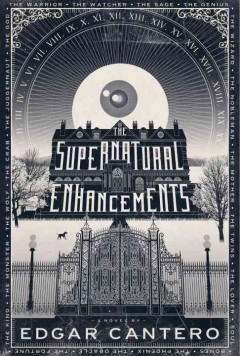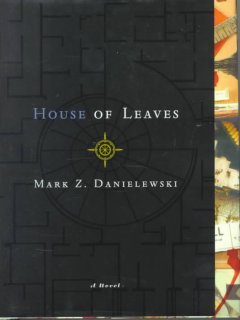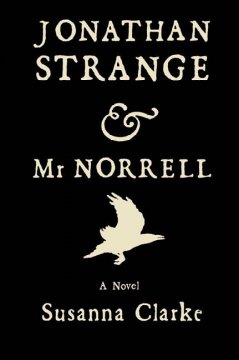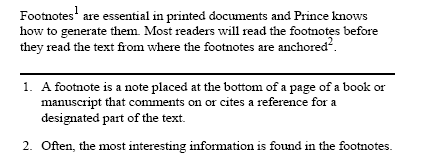As an historian, I love good, detailed footnotes; the kind that not only tell you where an author came across a piece of information, but offers anecdotes, qualifies the point in some way, or generally just feels like you have been privy to some kind of secret insider information–like the author has taken you aside for a little chat in the middle of the book. Such footnotes often provide space in the text for the author to bring in pieces of fun information that just didn’t fit into the main body of the piece, but are just too good to pass up. There have been books where the best bits were found in the footnotes, rather than the primary text.
But what about footnotes in fiction?
There are any number of authors who look to enhance the world of their (fiction) story with footnotes, such as Douglas Adam’s incomparable The Hitchhiker’s Guide to the Galaxy, which offers brilliant little asides and incidental information as a way to familiarize the reader with the vast incomprehensibility of the world he is describing, and also to get the reader as familiar as possible with the main characters. Additionally Susanna Clarke uses footnotes in Jonathan Strange and Mr. Norrell as a place to familiarize readers with fairy folklore, the history of English magic, and the various texts that her characters study. This feels like genius when you’re reading the text, for if Clarke had tried to jam these facts and tales into her already beautifully detailed story, it would jam-up the narrative flow irrevocably. Instead, readers have the chance to pause, seek out another tale in the footnotes, and return to the text at their own pace, their knowledge and familiarity with the scholarship of Strange and Norrell immeasurably enhanced (I am told that the e-version of the book makes this process even simpler still by allowing readers to toggle between the text and the footnotes at their leisure).
But there are other books that take the notion of the footnote further still, not only using them to enhance the fictional world of the text, but to create a new kind of reality altogether. They use our acceptance of the footnote against us, disguising fiction in the guise of provable fact. Personally, I adore these kind of texts, and revel in the the games that they play; I know they aren’t for everyone–among other things, having to switch from text to footnote can be physically taxing on the eyes, not to mention distracting from a good story. But, if done properly, these kinds of footnotes can make the world of a good book that much more unforgettable, and make the reading experience that much more exciting. So if, like me, you think footnotes in fiction are a great idea, then be sure to check out…
 The Supernatural Enhancements: We’ve discussed this book previously, but it deserves to be talked about a good deal more. By turns thoroughly creepy, marvelously engrossing, disarmingly sweet, and genuinely surprising, this is a book that builds on a number of tropes (haunted houses, secret cabals, hidden histories), but feels nothing except utterly original. When A. inherits a house from a relative he didn’t know existed, he and his odd companion find a mystery waiting for them hidden in cyphers, codes, and ancient rituals. Edgar Cantero uses the footnotes as a way to explore the different cyphers at work in his text, offering actual, useful information while at the same time enhancing the eerie atmosphere of the story by layering it with other mysteries and secrets.
The Supernatural Enhancements: We’ve discussed this book previously, but it deserves to be talked about a good deal more. By turns thoroughly creepy, marvelously engrossing, disarmingly sweet, and genuinely surprising, this is a book that builds on a number of tropes (haunted houses, secret cabals, hidden histories), but feels nothing except utterly original. When A. inherits a house from a relative he didn’t know existed, he and his odd companion find a mystery waiting for them hidden in cyphers, codes, and ancient rituals. Edgar Cantero uses the footnotes as a way to explore the different cyphers at work in his text, offering actual, useful information while at the same time enhancing the eerie atmosphere of the story by layering it with other mysteries and secrets.
 House of Leaves: I think Mark Danielowski may have re-invented the book when he composed this mind-bending novel. Ostensibly, it is the record of a family who bought a house that turned out to be bigger on the inside than on the outside…and kept on growing. But there is nothing at all straightforward about this story. It is a text-within-a-text-within-a-text, and the various stories compete for space across the page and, particularly, in the footnotes, where the reader often hears from film critics (Regarding a documentary about the house that may or may not have ever been screened), the blind hermit who collected the stories about the house, and the increasingly mad rantings of the young man who collected the hermit’s ramblings. The whole thing is deeply unsettling, especially as the text begins to change color and wend its way across the page–upside down, sideways, tripping and falling into the margins….but also spectacularly engrossing. I can’t remember a book that made me so aware of the act of reading the same way that this one did.
House of Leaves: I think Mark Danielowski may have re-invented the book when he composed this mind-bending novel. Ostensibly, it is the record of a family who bought a house that turned out to be bigger on the inside than on the outside…and kept on growing. But there is nothing at all straightforward about this story. It is a text-within-a-text-within-a-text, and the various stories compete for space across the page and, particularly, in the footnotes, where the reader often hears from film critics (Regarding a documentary about the house that may or may not have ever been screened), the blind hermit who collected the stories about the house, and the increasingly mad rantings of the young man who collected the hermit’s ramblings. The whole thing is deeply unsettling, especially as the text begins to change color and wend its way across the page–upside down, sideways, tripping and falling into the margins….but also spectacularly engrossing. I can’t remember a book that made me so aware of the act of reading the same way that this one did.
 The Ghost Network: This is a bizarre little text, but one that is so startlingly unique that it’s worth a read. Author Catie Disabato poses as the editor of a “found manuscript” documenting the search for doomed pop-superstar Molly Metropolis. According to the premise of this book, all that Disabato knows is that her mentor has vanished while searching for Molly, leaving only these notes. Thus, the footnotes in the text not only cite books, both real and imaginary, that the characters used to learn about the obscure cult that Molly Metropolis joined (a real-life group, though Disabato uses their history as a springboard for her own story), but they also discuss her own ‘history’ with the characters and the interactions she had with them during her own quest. This is a book that plays around with fact and fiction in a way that is partly genius and partly bizarre, but it is certainly a breath of fresh air for those looking for a change of pace.
The Ghost Network: This is a bizarre little text, but one that is so startlingly unique that it’s worth a read. Author Catie Disabato poses as the editor of a “found manuscript” documenting the search for doomed pop-superstar Molly Metropolis. According to the premise of this book, all that Disabato knows is that her mentor has vanished while searching for Molly, leaving only these notes. Thus, the footnotes in the text not only cite books, both real and imaginary, that the characters used to learn about the obscure cult that Molly Metropolis joined (a real-life group, though Disabato uses their history as a springboard for her own story), but they also discuss her own ‘history’ with the characters and the interactions she had with them during her own quest. This is a book that plays around with fact and fiction in a way that is partly genius and partly bizarre, but it is certainly a breath of fresh air for those looking for a change of pace.
 Jonathan Strange and Mr. Norrell: Because along with informative footnotes, there are also citations to the works of ancient magicians, as well as texts by the characters themselves. And even though people tell me this is a work of fiction, seeing John Segundus’ or Jonathan Strange’s name as the author of a text allows me to believe a little longer that they are, in fact, real in a world outside my head.
Jonathan Strange and Mr. Norrell: Because along with informative footnotes, there are also citations to the works of ancient magicians, as well as texts by the characters themselves. And even though people tell me this is a work of fiction, seeing John Segundus’ or Jonathan Strange’s name as the author of a text allows me to believe a little longer that they are, in fact, real in a world outside my head.

